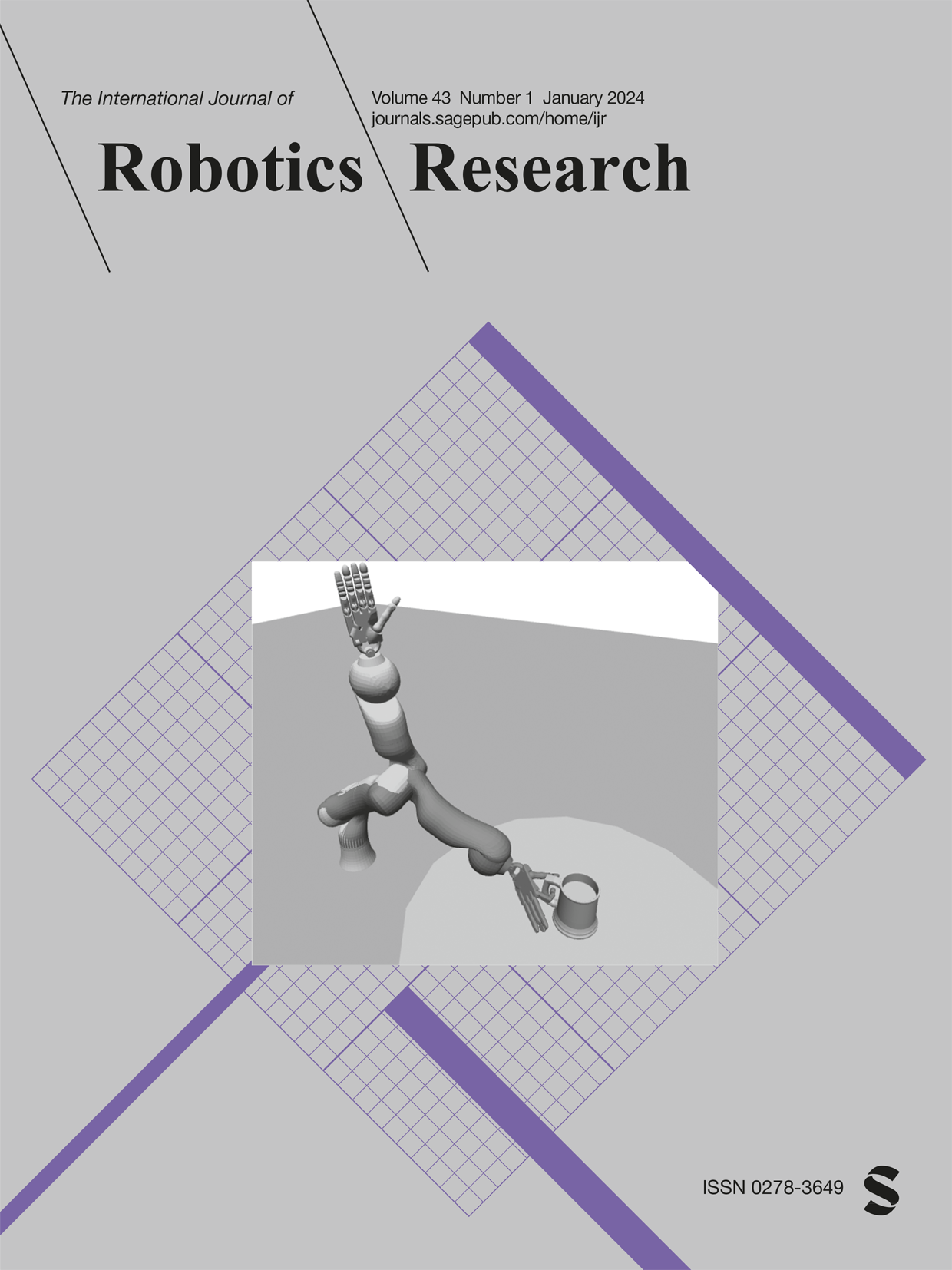机器人中的动态运动原语:教学调查
IF 5
1区 计算机科学
Q1 ROBOTICS
引用次数: 66
摘要
生物系统,包括人类,具有以灵活多样的方式执行复杂任务的天生能力。感觉运动控制的研究人员一直致力于理解和正式定义这种先天特征。生物系统能够将基本的运动单位组合并适应于复杂的任务,这一观点得到了几个实验结果的支持,最终导致了运动原语理论的形成。在这方面,动态运动原语(Dynamic Movement Primitives, dmp)代表了一种优雅的数学公式,将运动原语作为稳定的动力系统,非常适合为机器人等人工系统生成运动命令。在过去的几十年里,dmp启发了不同机器人领域的研究人员,包括模仿和强化学习、最优控制、物理交互和人机协同工作,并发表了大量论文。本教程调查的目的有两个。一方面,我们用严格的数学术语介绍了现有的DMP公式,并讨论了每种方法的优点和局限性以及实际实现细节。在本教程中,我们还搜索了所提供方法的现有实现,并发布了其他一些实现。另一方面,我们对现有文献进行了系统和全面的回顾,并对DMP的最新工作进行了分类。本文最后讨论了DMPs的局限性,并概述了可能的研究方向。本文章由计算机程序翻译,如有差异,请以英文原文为准。
Dynamic movement primitives in robotics: A tutorial survey
Biological systems, including human beings, have the innate ability to perform complex tasks in a versatile and agile manner. Researchers in sensorimotor control have aimed to comprehend and formally define this innate characteristic. The idea, supported by several experimental findings, that biological systems are able to combine and adapt basic units of motion into complex tasks finally leads to the formulation of the motor primitives’ theory. In this respect, Dynamic Movement Primitives (DMPs) represent an elegant mathematical formulation of the motor primitives as stable dynamical systems and are well suited to generate motor commands for artificial systems like robots. In the last decades, DMPs have inspired researchers in different robotic fields including imitation and reinforcement learning, optimal control, physical interaction, and human–robot co-working, resulting in a considerable amount of published papers. The goal of this tutorial survey is two-fold. On one side, we present the existing DMP formulations in rigorous mathematical terms and discuss the advantages and limitations of each approach as well as practical implementation details. In the tutorial vein, we also search for existing implementations of presented approaches and release several others. On the other side, we provide a systematic and comprehensive review of existing literature and categorize state-of-the-art work on DMP. The paper concludes with a discussion on the limitations of DMPs and an outline of possible research directions.
求助全文
通过发布文献求助,成功后即可免费获取论文全文。
去求助
来源期刊
CiteScore
22.20
自引率
0.00%
发文量
34
审稿时长
6-12 weeks
期刊介绍:
The International Journal of Robotics Research (IJRR) has been a leading peer-reviewed publication in the field for over two decades. It holds the distinction of being the first scholarly journal dedicated to robotics research.
IJRR presents cutting-edge and thought-provoking original research papers, articles, and reviews that delve into groundbreaking trends, technical advancements, and theoretical developments in robotics. Renowned scholars and practitioners contribute to its content, offering their expertise and insights. This journal covers a wide range of topics, going beyond narrow technical advancements to encompass various aspects of robotics.
The primary aim of IJRR is to publish work that has lasting value for the scientific and technological advancement of the field. Only original, robust, and practical research that can serve as a foundation for further progress is considered for publication. The focus is on producing content that will remain valuable and relevant over time.
In summary, IJRR stands as a prestigious publication that drives innovation and knowledge in robotics research.

 求助内容:
求助内容: 应助结果提醒方式:
应助结果提醒方式:


